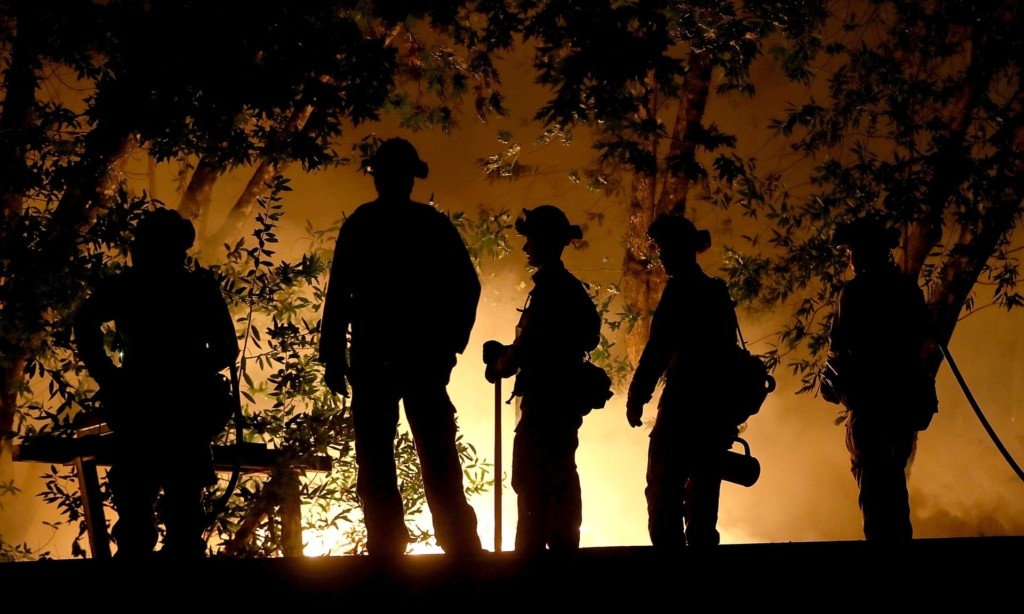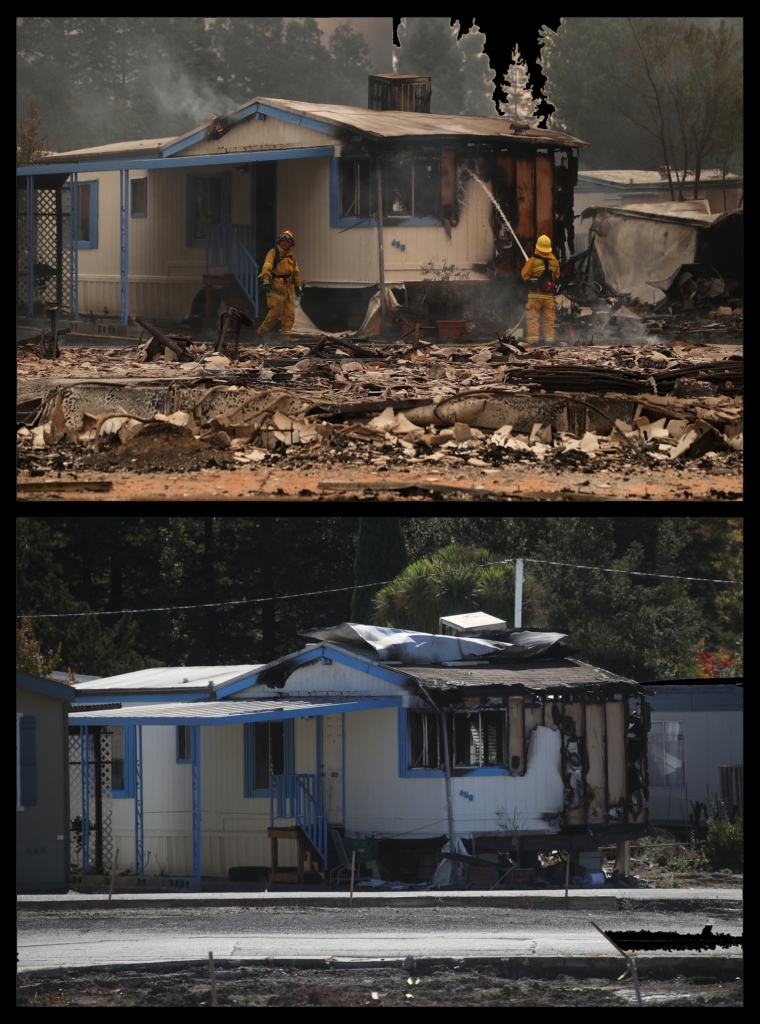Thursday October 17th… Dear Diary. The main purpose of this ongoing blog will be to track United States extreme or record temperatures related to climate change. Any reports I see of ETs will be listed below at the very end of this daily blog. I’ll refer to extreme or record temperatures as ETs (not extraterrestrials).😉
The Aftermath Of Those Picking Up The Pieces From Climate Change…Case In Point Californian Wildfires
Across America what happens to people and families already devastated by say Michael or Midwestern floods from this spring, or as in the case of what I just read in Desdemona Despair, California’s wildfires? Does society take heart and care for them, offering long term comfort such that they can recoup their losses, gradually rebuilding their homes and lives so that they don’t encounter financial hardship? Or, are some people proverbially let out to dry, left hanging by insurance companies and society in general, being expected to pay for rebuilding, encountering nearly insurmountable bills? Here is what we see in the aftermath of some of California’s most recent large conflagrations:
Two years after California wildfires, survivors poised to lose housing funds – Dealing with insurance companies is “the disaster after the disaster”

Bu Vivian Ho
8 October 2019
SAN FRANCISCO (The Guardian) – Two years ago, they lost everything – their homes, baby photos, family heirlooms, keepsakes, jewelry, mementos – in a flurry of wildfires that ripped through California’s wine country.
Now, on the second anniversary of these fires that killed 44 and destroyed thousands of buildings, survivors are poised to lose the insurance coverage that allowed them to pay for temporary housing while they waited out the rebuilding process of their new homes.
Under California law, insurance companies are required to provide coverage for additional living expenses, such as rent or a hotel room, for at least 24 months after a state of emergency. But for the survivors of the 2017 wildfires, two years was barely enough time to begin rebuilding.
Debris removal took time. Geotechnical surveys – many lots had been so decimated by the flames that they were once again deemed undeveloped land – took even more time. Then came the geotechnical engineering, and finding architects and contractors, and then getting building permits.
The coverage the Santa Rosa resident Vita Iskandar has through State Farm expires on 16 October, but construction on her home is not set to be completed until December.

Top: firefighters spray water on fire-damaged mobile home at the Journey’s End Mobile Home Park in Santa Rosa, California, 9 October 2017. Bottom: the same mobile home, a year later. “We really didn’t have two years,” said Lisa Frazee, who lost her Santa Rosa home in the Tubbs fire. Photo: Justin Sullivan / Getty Images
“We requested a continuation,” said Iskandar, a community organizer who runs the resource-sharing website Neighbors Together Strong and Resilient. “We requested an extension from our landlord. But what we really have to decide now is if paying out of pocket for rent is worth it, or if we’ll have to camp out of our incomplete home.”
“We really didn’t have two years,” said Lisa Frazee, who lost her Santa Rosa home in the Tubbs fire. “We had to get our infrastructure back – the bridges, the roads – before we could even start personally thinking of rebuilding. The cities and counties were inundated with that first. Then we had to get builders and there aren’t enough builders. There aren’t enough laborers.”
Around Santa Rosa, only 20% of reconstruction has been completed while 62.5% is still in process.
Many of the wildfire survivors call dealing with the insurance companies “the disaster after the disaster” because of how often they feel retraumatized by the companies’ policy decisions. [more]
Two years after California wildfires, survivors poised to lose housing funds
I bring this article up because in the future such disasters as the Tubbs Fire will only get worse. When will the stress on society become so great that it may “cut loose” climate crisis victims due to resource and budget issues? This is a question we should all ponder. Of course, most of us are willing to help our neighbors when they are in dire need, but how much self sacrifice, particularly with finances, are we willing as individuals to incur in order to give help our fellow man?
This issue links with our health care issue also, since we soon will be debating if U.S. society will be willing to take on Medicare For All, or socialized medicine similar to plans in Europe and Canada, which may cost taxpayers more money. Smart plans will give the middle and lower classes more breaks while putting most of the financial tax burden on the richer upper class. Still, with climate disasters stemmed from sea level rise and stronger storms, there will come a time when the cost of rebuilding in mass from victims, particularly as South Florida sinks into the sea, that we as a society can’t right the ship, having to protect what’s left of our own proverbial bacon. Insurance companies will go bankrupt as people try to rebuild in Florida and elsewhere along the U.S. coast; thus, there will be added pressure on taxpayer’s to pony up help.
This won’t be like the aftermath of a nuclear holocaust in which society gets obliterated all at once, never to make a comeback. Climate change will cause a slow drip drip drip of costly pullbacks from the seas and away from wildfire prone areas with much pressure on agricultur, also. Society will adapt, but more and more people will fall through the cracks.
Right now the U.S. is fortunate enough to experience a boom economy, but what may happen when another recession or, God forbid, a depression comes along in conjunction with mid 21st century elevated climate crisis disasters? Could climate crisis disasters themselves throw the U.S. into a depression? These are all questions that we will try to answer as long as I’m blogging on this site.
Here is a related article:
Here is more climate and weather news from Thursday:
(As usual, this will be a fluid post in which more information gets added during the day as it crosses my radar, crediting all who have put it on-line. Items will be archived on this site for posterity. In most instances click on the pictures of each tweet to see each article.)
Here is an oversees “ET” from Australia:
(If you like these posts and my work please contribute via the PayPal widget, which has recently been added to this site. Thanks in advance for any support.)
Guy Walton- “The Climate Guy”